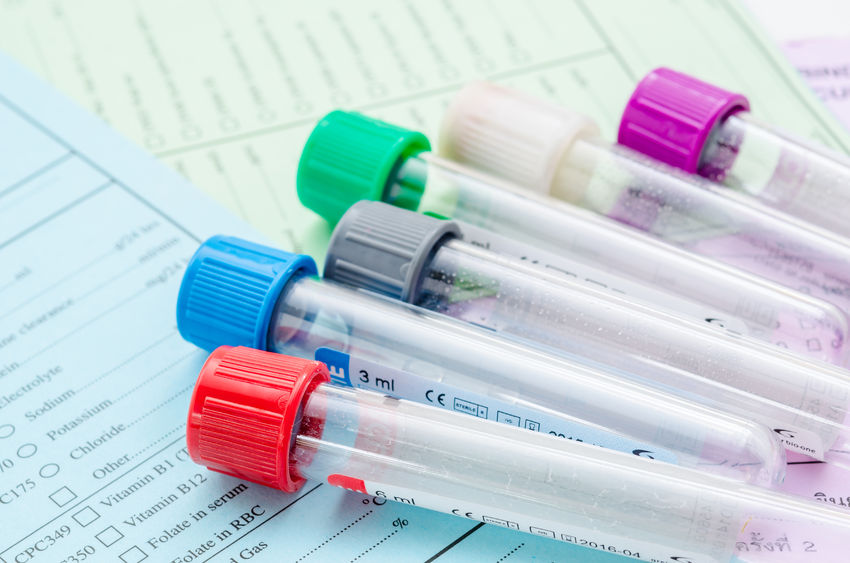
VLDL Cholesterol
Also known as Vldl Cholesterol BloodWhat is this test?
This test is used to find out the very low-density lipoprotein cholesterol levels in the blood.
What is Cholesterol?
Cholesterol is a waxy substance generally produced from the liver. Other parts of the body also produce cholesterol in less amount. But most of the cholesterol is available from the food items, that are consumed by an individual. Cholesterol is an essential lipid constituent of cell membranes. It is also required to form vitamin-d and a precursor of steroid hormones like androgens, estrogens, progestins, mineral corticosteroid etc. and of bile acids which are essential for fat digestion.
Cholesterol is synthesized from acetyl-CoA. So, acetyl-CoA is converted to hydroxymethyl glutaryl-CoA HMG-CoA and then with the help of HMG-CoA reductase, mevalonate is formed. Mevalonate is the converted to several isoprene intermediates and forms squalene. Squalene is then converted to lanosterol and then to cholesterol. Cholesterol is absorbed into the intestinal lining cells and then incorporated into the lipoprotein complexes. As cholesterol is insoluble in the blood it binds to the lipoproteins for transportation through the bloodstream and lymphatic fluid. After entering the blood lipoproteins carry cholesterol to the different organs and tissues of the body. The cholesterol then utilized by organs or tissues for several functions. The unused or excess cholesterol is stored as fat droplets in the adipose cells for further usage.
What are lipoproteins?
Lipoproteins are lipid-protein complexes that help in the transportation of all lipids synthesized in specific organ and derived from food through the body by the bloodstream and lymphatic fluid. Lipoproteins are spherical in structure and are of four (4) types. Each type of lipoprotein has its own characteristic protein and lipid composition. They are the high-density lipoprotein (HDL), low-density lipoprotein (LDL), very low-density lipoprotein (VLDL), and chylomicrons. The difference in the types of lipoproteins is that the composition of lipid and protein.
What are Chylomicrons?
Chylomicrons are the largest lipoproteins and have the lowest lipid to protein ratio. This carries the triglyceride, cholesteryl ester and free cholesterol into the heart muscle, skeletal muscle, lactating mammary tissue, and adipose tissue. VLDL is synthesized by the liver and is analogous to the chylomicrons. VLDL also deliver the triglyceride, cholesteryl ester and cholesterol to the heart muscle, skeletal muscle, lactating mammary tissue, and adipose tissue. As VLDL deposits its triglycerides, it becomes intermediate-density lipoprotein (IDL). LDL is derived from VLDL and IDL in the plasma. LDL contains large amounts of cholesteryl esters and cholesterol. Most of the cholesterol found in the plasma is associated with the LDL. HDL is the smallest lipoproteins and plays important role in the removal of excess or unused cholesterol from the cells and returns this cholesterol to the liver. The liver breaks down the returned cholesterol to bile acids and salts. LDL and HDL are the major factors in maintaining cholesterol levels in the body.
Why this test is performed?
The VLDL cholesterol test is done to know whether an individual is having normal or abnormal cholesterol levels in the body. The doctor may ask to perform this test if an individual is suffering from conditions like diabetes, high blood pressure and have heart disease or with a family history of heart disease, have a heart attack. This test is also done to determine the risk of developing heart disease. If an individual is on the treatment of anti-cholesterol medications like statins, then the doctor may ask to perform this test to evaluate and to check the effectiveness of the treatment and cholesterol levels in the body. This helps the doctor to rule out the patient disease condition. Generally, when a patient is diagnosed with atherosclerosis or hypercholesterolemia visits hospital for a general check-up, the doctor may ask to undergo the VLDL-C test which gives a better status of the condition. Mostly, this test is done along with other cholesterol tests to confirm the diagnosis.
Precautions:
Smoking, statin drugs like simvastatin, rosuvastatin may change the levels of VLDL-C in the blood. So inform your doctor prior to the test if you are on these medications.
Frequency:
For individuals above 20 years of age, this test is recommended every 4-6 years. The frequency of this test depends on various factors like age, history of heart disease, high blood pressure, physically inactive etc.
Test Preparation
Inform your doctor if you are on any medications, have any allergies or underlying medical conditions before your VLDL Cholesterol. Your doctor will give specific instructions depending on your condition on how to prepare for VLDL Cholesterol.
The VLDL-C test is done after you fasted (without eating anything) for a whole night or for up to 9 to 12 hours and only water is permitted. Alcohol should not be consumed for 24 hours before the test. Usually, the blood is drawn in the morning after an overnight fasting.
Understanding your test results
If VLDL-C blood levels are more than the normal range then it indicates that there is a high chance of risk for developing a heart disease and other conditions like heart attack (blockage of blood flow to the heart muscle), atherosclerosis (deposition of fat, cholesterol and other substances in the artery walls), blockage of blood flow due to fat deposition in the arteries, obesity, high consumption of fatty food items, smoking, less physical activity etc.
If test results are less than the normal range, then it indicates that there is a low chance for risk of developing a heart disease, good physical activity, infection, inflammation, cirrhosis (liver damage and causes liver failure), inherited lipoprotein deficiency (genetic disorder in which a person does not have the lipoprotein lipase enzyme which helps to break down the fat molecules).
| Gender | Age groups | Value |
| UNISEX | All age groups | 2 - 30 mg/dl |

